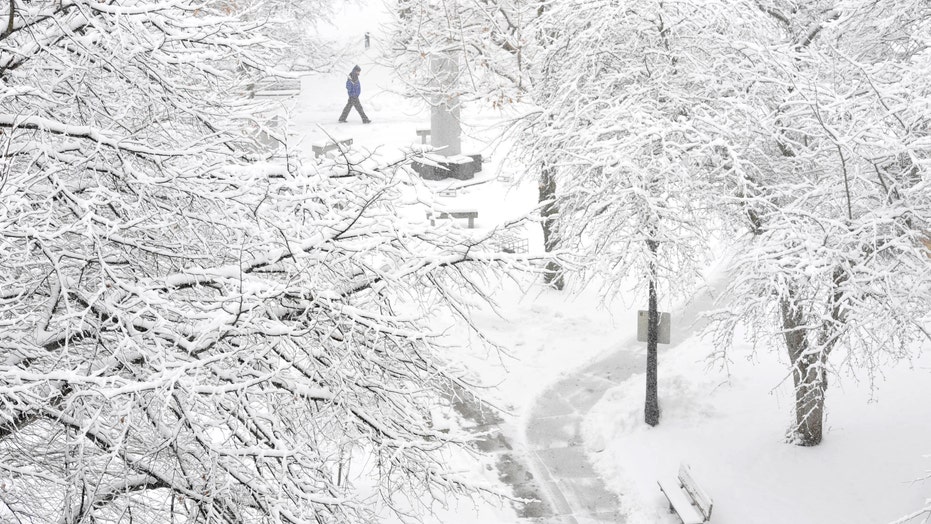NEW YORK (AP) – Tens of millions of people along the East Coast hunkered down for a storm that for most failed to live up to predictions that it would be one of the worst they'd ever seen.
Forecasters originally said the storm could bring 1 to 3 feet of snow and punishing hurricane-force winds. But early Tuesday, they downgraded most of those numbers, saying New England would fare the worst, but even then not as bad as expected.
Bruce Sullivan of the National Weather Service said Boston and Providence, Rhode Island, could get the most snow, about 2 feet. New York could see 10 inches to 20 inches, Hartford, Connecticut, 1 to 2 feet, and Philadelphia and central New Jersey about 6 inches.
The National Weather Service over the weekend had issued a blizzard warning for a 250-mile swath of the region, meaning heavy, blowing snow and potential whiteout conditions.
On Monday, life abruptly stopped across the region as officials ordered workers to go home early, banned travel, closed bridges and tunnels, and assembled their biggest plowing crews.
"When you wake up in the morning, it is going to look like a blizzard," said Massachusetts Gov. Charlie Baker, echoing the concern of many government leaders.
Light snow fell steadily early Tuesday in midtown Manhattan as a few municipal trucks rumbled down empty streets. The city had an almost eerie, post 9/11 feel to it: No airplanes in the sky. An unexpected quiet.
More than 7,700 flights in and out of the Northeast were canceled, and many of them may not take off again until Wednesday. Schools and businesses let out early. Government offices closed. Shoppers stocking up on food jammed supermarkets and elbowed one another for what was left. Broadway stages went dark.
Mayor Bill de Blasio urged New Yorkers to go home and stay there, adding: "People have to make smart decisions from this point on."
Commuters like Sameer Navi, 27, of Long Island, were following the advice.
Navi, who works for Citigroup in Manhattan, said he takes the Long Island Rail Road every day and left work early Monday after warnings by local officials to get home before the brunt of the storm. "I did leave earlier than usual," he said.
In New Jersey, plows and salt spreaders remained at work on the roads Monday night in Ocean County, one of the coastal areas that was expected to be among the hardest hit. There was a coating of snow on the roads but hardly any vehicles were traveling on them, as residents seemed content to stay indoors and monitor the storm in comfort.
Most businesses in the area had gone dark, including some convenience stores and gas stations.
Earlier in the day, Nicole Coelho, a nanny from Lyndhurst, New Jersey, stocked up on macaroni and cheese, frozen pizzas and milk at a supermarket.
"I'm going to make sure to charge up my cellphone, and I have a good book I haven't gotten around to reading yet," she said.
Ben Shickel went grocery shopping in Chestnut Hill, Massachusetts, and found shelves had been cleaned out.
"We're used to these big snowstorms in New England, but 2 to 3 feet all at once and 50 to 60 mph winds? That's a different story," he said.
Last minute shoppers filed into the Jersey City ShopRite Monday evening, looking to stock up before the brunt of the storm hit. "I heard it's supposed to be snowing for two days straight, so we plan on staying inside and munching," said 18-year old Christian Waiters, who serves in the military.
On Wall Street, however, the New York Stock Exchange stayed open and said it would operate normally Tuesday as well.
Coastal residents braced for a powerful storm surge and the possibility of damaging flooding and beach erosion, particularly in New Jersey and on Cape Cod in Massachusetts. Officials in New Jersey shore towns warned people to move their cars off the streets and away from the water.
Utility companies across the region put additional crews on standby to deal with anticipated power outages.

